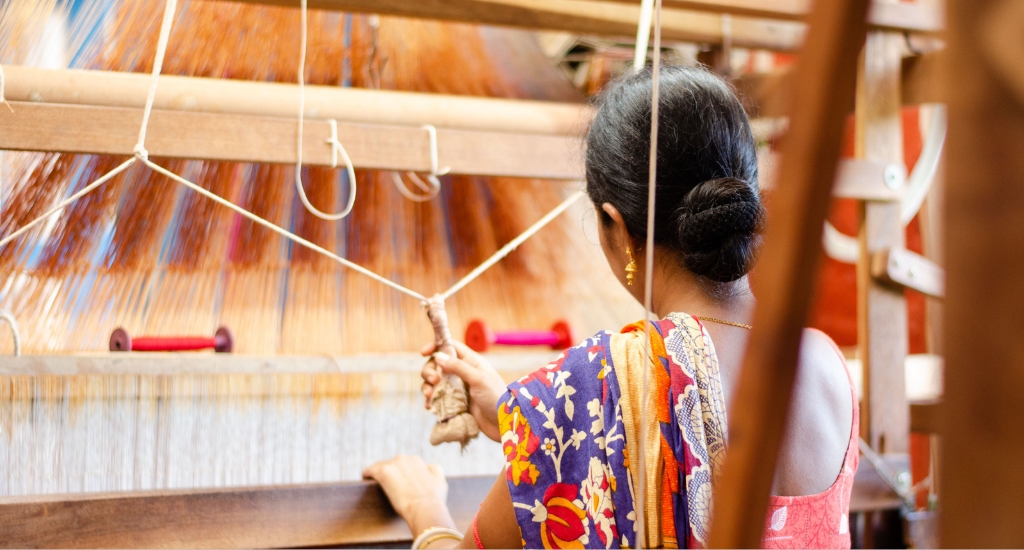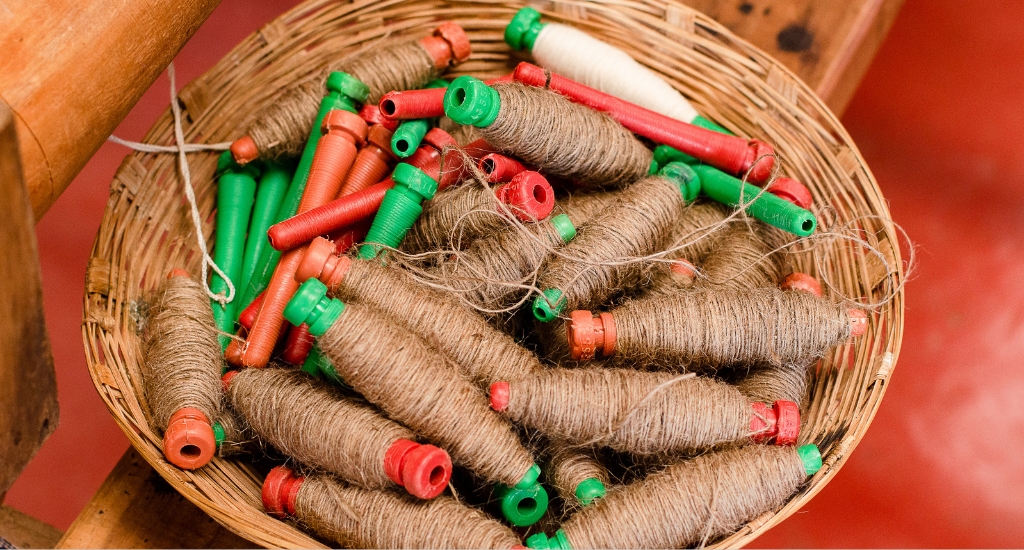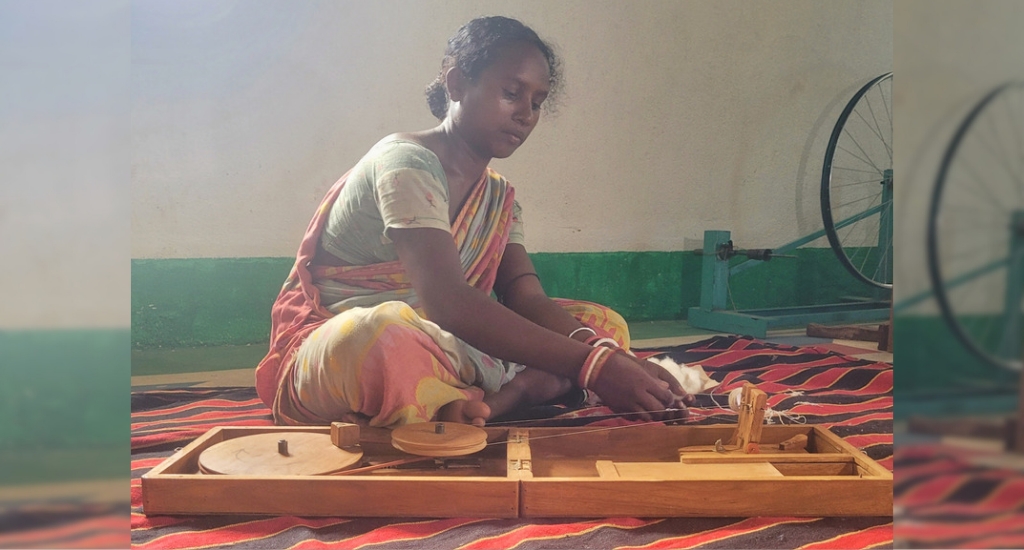Mayurbhanj revives traditional looms
Mayurbhanj’s handloom legacy is experiencing a remarkable resurgence, stitching together threads of tradition and innovation, painting a brighter canvas for its future, one vibrant sari at a time.
Mayurbhanj’s handloom legacy is experiencing a remarkable resurgence, stitching together threads of tradition and innovation, painting a brighter canvas for its future, one vibrant sari at a time.
Many homes in Odisha’s Mayurbhanj, the home district of President Droupadi Murmu, once resonated with the rhythmic clattering of handlooms. For generations, the skilled weavers have interwoven tales into their fabrics, crafting vibrant textiles that mirror the essence of this region inhabited mostly by tribal communities.
However, these evocative scenes gradually faded, and like many traditional crafts, the handloom industry in Mayurbhanj faced a gradual decline.
In a fervent endeavour to resurrect this treasured heritage and empower the talented artisans, concerted efforts have been underway to infuse new life into the district’s handloom sector.
In collaboration with the Mauna Dhwani Foundation, a Bengaluru-based NGO, the Chuliaposi centre, along with 12 others, has been instrumental in transforming the lives and livelihoods of many in villages across three blocks of Mayurbhanj.

Nearly 350 women are engaged in this venture. They craft exquisite saris, with a particular focus on Santhal and Mayurbhanj saris, which had gradually slipped into obscurity. Among their creations are Kumbha saris with temple-top borders and Jhoti saris, inspired by an Odia craft made from rice paste. These saris range from Rs 5000 to Rs 20,000, and beyond.
Tilotama Barik, a 41-year-old from Chuliaposi village, used to sell puffed rice to sustain her family. Their livelihood depended on rain-fed agriculture. However, a transformational change occurred in 2018 when she enrolled in the handloom unit established in her village.
“I was part of the self-help group (SHG), but we weren’t very active. Here (handloom centre), our income is directly linked to the work we accomplish. I’ve managed to repay my loans and even save for my children’s education,” said Tilotama.
She now earns between Rs 3,000 and Rs 7,000, depending on the volume of work and the number of finished products.

The handloom unit in Atanati boasts 20 looms, and the village itself donated 15 decimals of land for its establishment. The women underwent training under experienced weavers and masters, followed by hands-on practice on the looms. For every 25 weavers, a master trainer is designated.
According to Maina Baskey, a 27-year-old native of Atanati, some of their creations boast designs that adorned saris worn by their great-grandmothers. “Now, we create them with our own hands, and it brings us immense joy,” she said.
Odisha holds a rich history of handloom weaving dating back to 600 BC. Handloom weaving is intertwined with Lord Jagannath’s legacy. While Sambulpuri, Bomkai, Tassar, and handlooms from western Odisha enjoy popularity, Mayurbhanj was once renowned for its weaves on cotton sarees.
Raghunath Patra, in his early 90s, reminisced about how the art of handloom gradually waned from the district. “Decades ago, looms hummed with activity in numerous villages, with members of the Patra community predominantly engaged as weavers. Handloom societies were even established,” he recalled.

He emphasised that the rising input costs associated with weaving eventually rendered these societies economically unsustainable. “There was no government support, and it gradually became less profitable. People began to incur losses and turned to other sources of income. For many years, there were no active looms in the district and no weavers,” Patra lamented.
Sabita Patra, a 30-year-old, remembered her grandparents having a small machine loom at home. However, as she grew up, she witnessed a declining interest in the craft. “I never imagined we could bring these looms back to our village, let alone learn the art of weaving and create a sari ourselves. Weaving feels like a connection to our roots,” she said.
The revival effort is further supported by interest from the district textile department and local communities working together to provide training and educational opportunities for budding weavers.
The resurgence of handlooms has not only bestowed sustainable livelihoods upon local artisans but has also rekindled a sense of pride in their craft and cultural heritage. Beyond saris, the women craft bags and travel kits for a naval company, with many more cloth-based items in the pipeline.

These women are also mastering the art of making thread from cotton, dyeing, and evolving into trainers themselves. These handloom units also support natural and azo-free dyeing units. Azo dyes are known to be potential carcinogens and are banned in many countries.
“It’s essential for this practice to become sustainable, enabling them to carry it forward even without external support. With this in mind, we have been training these women to become trainers themselves. Currently, we have master trainers from other handloom-rich districts of Odisha. In the coming years, we hope the next generation of weavers will be trained by the women here,” said Indrajeet from Mauna Dhwani Foundation.
The lead image at the top shows around 350 women from three different blocks of Mayurbhanj district are engaged in managing these looms and reviving the lost tradition. (Photo by Divya Vilvaraj)
Aishwarya Mohanty is an independent journalist based in Odisha. She reports on the intersection of gender, social justice, rural issues and the environment. She was also a Rural Media Fellow powered by Youth Hub.